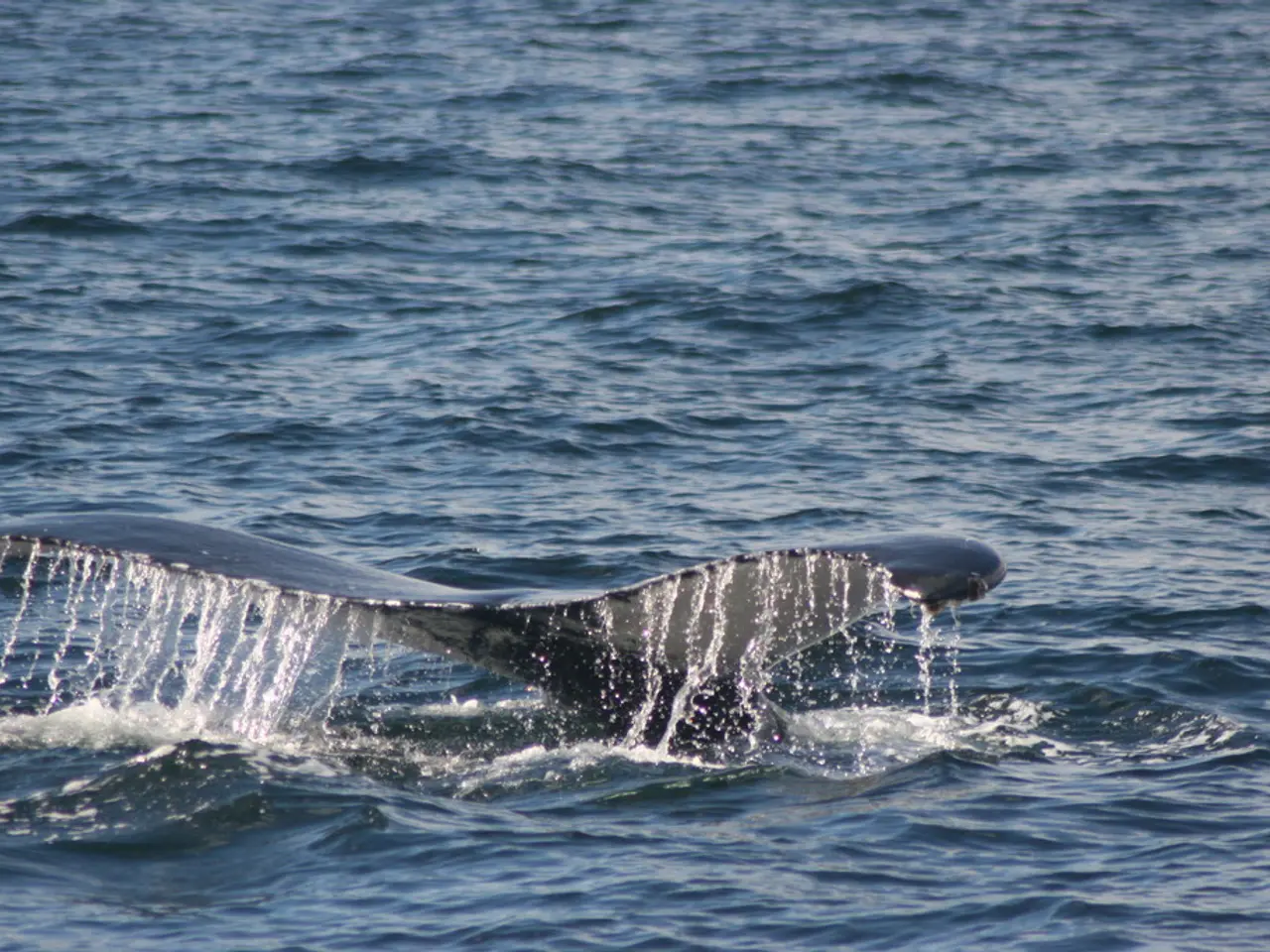Seals croon awe-inspiring melodies reminiscent of nursery rhymes in theirunique structure
In the icy expanses of Antarctica, the leopard seal, known as the "songbird of the Southern Ocean," has been captivating researchers with its unique and intricate vocalizations. These hoots and trills, reminiscent of an otherworldly lullaby, have been compared to human nursery rhymes in their structure and predictability.
A team of researchers studied the songs of 26 leopard seals off the coast of Eastern Antarctica throughout the 1990s. They discovered that male seals produce complex songs structured like nursery rhymes, with each seal using a unique arrangement of five shared "notes" to compose their own personal song.
During the spring breeding season, male leopard seals perform these songs underwater for two minutes before returning to the surface for air. The repetition and predictability of these songs are essential for communication in the harsh underwater conditions of Antarctica, helping other seals recognize identity and fitness signals clearly.
Each male's sequence acts like a signature or name, allowing individuals to stand out despite using the same "alphabet" of five core call types shared by the population. The songs can last up to 13 hours, making them a persistent presence in the Antarctic soundscape.
Female leopard seals sometimes sing, but the reasons for this behaviour are unknown. Chambers, one of the researchers, suggested that female seals might teach their pups how to sing, although this behaviour has never been observed in the wild. Alternatively, they could be communicating with each other.
The structure of leopard seal songs is highly functional. By combining a set of fixed calls into memorable, repetitive sequences, the seals are able to convey individual identity and reproductive fitness in a challenging environment.
Despite their complexity, leopard seal songs are still more predictable than the music of human musicians like the Beatles or Mozart. Varying pitch or frequency might not travel as far in their environment, Chambers said, making the simplicity of their songs a strategic advantage.
Male leopard seals use their songs to woo potential female mates and ward off rivals. To stand out from other males, each seal song needs to be unpredictable. This makes the leopard seal's songs a fascinating example of evolutionary adaptation in the realm of communication.
In the vast, icy wilderness of Antarctica, the leopard seal's song serves as a unique and captivating testament to the power of music and its role in communication, even in the most unexpected of places.
While the structure of leopard seal songs resembles nursery rhymes, they also share some characteristics with modern technology, displaying repetition and predictability similar to algorithms and coding sequences. This proves that complex communication systems can evolve independently in various species and environments, linking environmental-science and technology.
Furthermore, the unpredictability displayed in the leopard seal songs while wooing potential mates can be compared to innovation in the music industry, where artists strive to create unique and memorable compositions to stand out, bridging science and popular music.




